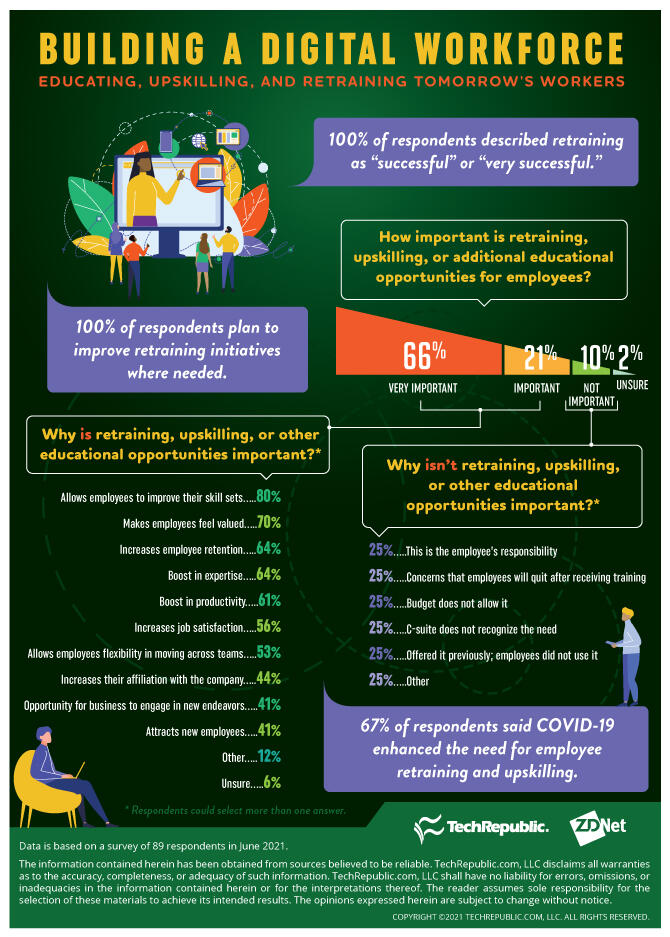100% of survey respondents said education and developmental opportunities were "somewhat successful" or "very successful."

Image: Prostock-Studio, Getty Images/iStockphoto
According to the TechRepublic article "Up to 12.5 million Americans could struggle to find work in 2030 due to a growing skills gap" by Esther Shein, the United States will likely experience a shortfall in its workforce of 600,000 to 12.5 million—between 0.9% to 4.2% of its workforce—by 2030, according to a joint "The Future of Jobs in the Era of AI," released by Faethm and Boston Consulting Group.
How can businesses close the digital skills gap when the COVID pandemic, analytics, automation, artificial intelligence, digital transformation, and other tech trends keep changing business needs? TechRepublic Premium surveyed 89 respondents across a range of disciplines, company sizes, industry verticals and job functions to find out.
The survey explored the different ways technology helps business leaders build their future workforce, how to update employees' skills and the pros and cons of offering employees educational and development opportunities. More specifically, questions regarding the importance of training, types of training or skills focus, participation rates, success rates, budgets, feedback and assessments were asked.
Enjoying this article?
Download this article and thousands of whitepapers and ebooks from our Premium library. Enjoy expert IT analyst briefings and access to the top IT professionals, all in an ad-free experience.
Join Premium TodaySurvey respondents shared retraining and upskilling options offered by their organizations as well as rationale both for and against such programs. The majority of respondents (87%) reported that their companies consider any learning opportunity as either very important or important.
Businesses supported employee development and continuing education for varied reasons ranging from improving expertise and making employees feel valued to increasing employee retention and boosting productivity.
However, one-tenth of respondents don't consider such initiatives essential for business operations due to it being budget prohibitive, not utilized when offered previously, deferred to employees to manage, or a staff flight risk, thereby wasting time and money invested by the company.
Slightly more than two-thirds of respondents recognized the need for retraining and upskilling following the pandemic. A much smaller number (14%) of respondents said that the pandemic did not enhance a need for retraining or upskilling employees, and 20% were unsure.
According to respondents, the most popular training or skills initiatives focused on leadership (47%), cloud services (32%), automation (32%), cybersecurity (29%), networking/VPN technologies (29%) and SaaS (25%).
Despite the fact that 100% of respondents described the training as "somewhat successful" or "very successful," only 37% implemented an official feedback/analysis process to determine how employees benefited from such experiences. Further, 63% of respondents either did not contribute or realize the option existed.
Companies recognized the need to better promote and clarify feedback options. Across the board, 100% of respondents plan to improve their training, overall, reiterating the importance of such initiatives.
The infographic below contains selected details from the research. To read more findings, plus analysis, download the full report: Research: Workforce training is worth the investment, increasing employee productivity and job satisfaction.








 English (US) ·
English (US) ·